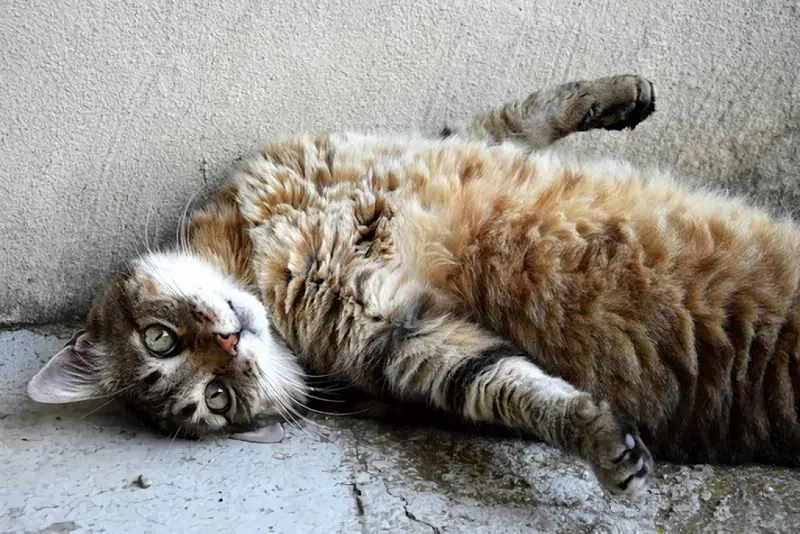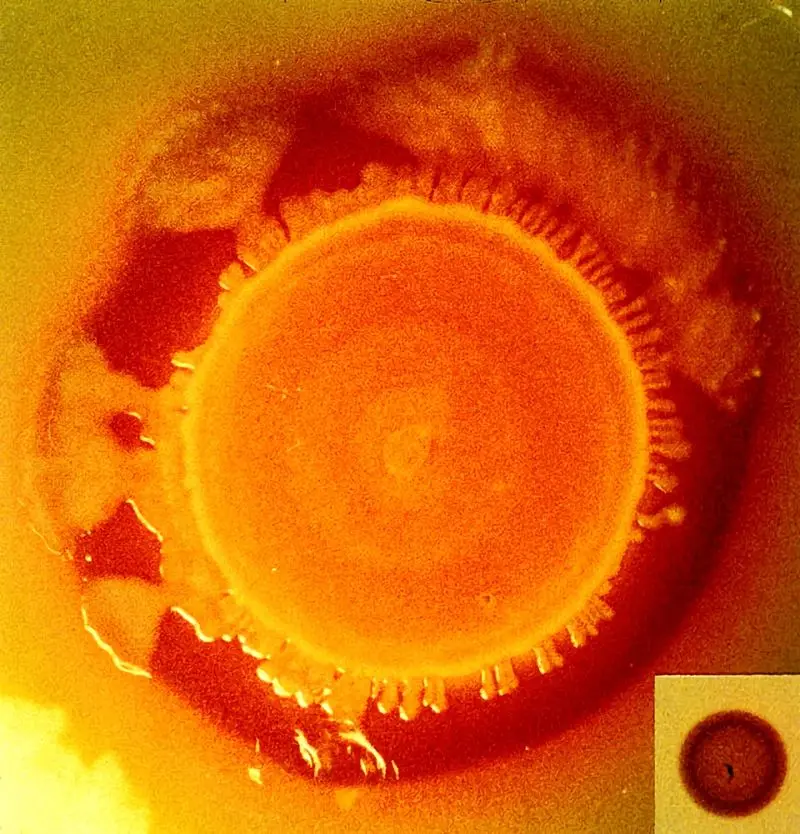 ↪ Description - CHLORPHENIRAMINE MALEATE
Note: Contents of sustained-release capsules may be placed on food, but should not beallowed to dissolve before ingestion.Dogs: a) 4 - 8 mg PO q12h (Kirk 1986) b) 2 - 4 mg PO bid-tid (Morgan 1988)Cats: a) For adjunctive treatment of feline... ↪ Read more
↪ Description - CHLORPHENIRAMINE MALEATE
Note: Contents of sustained-release capsules may be placed on food, but should not beallowed to dissolve before ingestion.Dogs: a) 4 - 8 mg PO q12h (Kirk 1986) b) 2 - 4 mg PO bid-tid (Morgan 1988)Cats: a) For adjunctive treatment of feline... ↪ Read more Veterinary Drug Handbook (VDH) is the reference veterinarians turn to when they want an independent source of information on the drugs that are used in veterinary medicine today.
-
 Is veterinary Liniment Gel safe for humans?
Is veterinary Liniment Gel safe for humans? -
 Giving Your Cat A Pill
Giving Your Cat A Pill -
 Dog Aggression
Dog Aggression -
 Dogs May Help Boost Infant Health
Dogs May Help Boost Infant Health -
 Animal-Assisted Therapy, Veterinary Social Work, & Social Work With People & Pets in Crisis
Animal-Assisted Therapy, Veterinary Social Work, & Social Work With People & Pets in Crisis -
 On-demand veterinary service gives advice on poorly pets
On-demand veterinary service gives advice on poorly pets -
 Should we stop throwing sticks for dogs?
Should we stop throwing sticks for dogs? -
 Can breathing in cat hair be harmful?
Can breathing in cat hair be harmful? -
 What does PU/PD mean in veterinary medicine?
What does PU/PD mean in veterinary medicine? -
 Common Meanings Of Cat Behavior
Common Meanings Of Cat Behavior -
 Bill calls for ban on sales of dogs, cats in Maine pet stores
Bill calls for ban on sales of dogs, cats in Maine pet stores -
 Curing Bad Cat Breath
Curing Bad Cat Breath -
 What does DVM stand for in veterinary?
What does DVM stand for in veterinary? -
 New Tracking Tool for Pathogen Investigators
New Tracking Tool for Pathogen Investigators -
Can binturongs be kept as pets?
-
 How long do instruments stay sterile after autoclaving veterinary?
How long do instruments stay sterile after autoclaving veterinary?
Doses - CHLORPHENIRAMINE MALEATE
 ↪ Description - CHLORPHENIRAMINE MALEATE
Note: Contents of sustained-release capsules may be placed on food, but should not beallowed to dissolve before ingestion.Dogs: a) 4 - 8 mg PO q12h (Kirk 1986) b) 2 - 4 mg PO bid-tid (Morgan 1988)Cats: a) For adjunctive treatment of feline... ↪ Read more
↪ Description - CHLORPHENIRAMINE MALEATE
Note: Contents of sustained-release capsules may be placed on food, but should not beallowed to dissolve before ingestion.Dogs: a) 4 - 8 mg PO q12h (Kirk 1986) b) 2 - 4 mg PO bid-tid (Morgan 1988)Cats: a) For adjunctive treatment of feline... ↪ Read more CHLORPHENIRAMINE MALEATE
 ↪ Doses - CHLORPHENIRAMINE MALEATE
Chemistry - A propylamine (alkylamine) antihistaminic agent, chlorpheniramine maleate occurs asan odorless, white, crystalline powder with a melting point between 130 - 135° C and a pKa of 9.2. One gram is soluble in about 4 ml of water, or 10 ml of... ↪ Read more
↪ Doses - CHLORPHENIRAMINE MALEATE
Chemistry - A propylamine (alkylamine) antihistaminic agent, chlorpheniramine maleate occurs asan odorless, white, crystalline powder with a melting point between 130 - 135° C and a pKa of 9.2. One gram is soluble in about 4 ml of water, or 10 ml of... ↪ Read more Doses - CHLOROTHIAZIDE, CHLOROTHIAZIDE SODIUM
 ↪ Description - CHLOROTHIAZIDE, CHLOROTHIAZIDE SODIUM
Dogs: For treatment of nephrogenic diabetes insipidus: a) 20 - 40 mg/kg PO q12h (Polzin and Osborne 1985), (Nichols 1989) For treatment of systemic hypertension: a) 20 - 40 mg/kg PO q12-24h with dietary salt restriction (Cowgill and... ↪ Read more
↪ Description - CHLOROTHIAZIDE, CHLOROTHIAZIDE SODIUM
Dogs: For treatment of nephrogenic diabetes insipidus: a) 20 - 40 mg/kg PO q12h (Polzin and Osborne 1985), (Nichols 1989) For treatment of systemic hypertension: a) 20 - 40 mg/kg PO q12-24h with dietary salt restriction (Cowgill and... ↪ Read more CHLOROTHIAZIDE, CHLOROTHIAZIDE SODIUM
 ↪ Doses - CHLOROTHIAZIDE, CHLOROTHIAZIDE SODIUM
Chemistry - A thiazide diuretic structurally related to the sulfonamides, chlorothiazide occurs as awhite or practically white, odorless, slightly bitter-tasting, crystalline powder. It has a melting pointof approximately 355° C. and pKas... ↪ Read more
↪ Doses - CHLOROTHIAZIDE, CHLOROTHIAZIDE SODIUM
Chemistry - A thiazide diuretic structurally related to the sulfonamides, chlorothiazide occurs as awhite or practically white, odorless, slightly bitter-tasting, crystalline powder. It has a melting pointof approximately 355° C. and pKas... ↪ Read more Doses - CHLORAMPHENICOL, CHLORAMPHENICOL PALMITATE, CHLORAMPHENICOL SODIUM SUCCINATE
 ↪ Description - CHLORAMPHENICOL, CHLORAMPHENICOL PALMITATE, CHLORAMPHENICOL SODIUM SUCCINATE
Dogs: For susceptible infections: a) 45 - 60 mg/kg PO q8h; 45 - 60 mg/kg IM, SQ or IV q6-8h (USPC 1990) b) 40 - 50 mg/kg IV, IM, SubQ or PO q8h; avoid in young animals or in breeding or pregnant... ↪ Read more
↪ Description - CHLORAMPHENICOL, CHLORAMPHENICOL PALMITATE, CHLORAMPHENICOL SODIUM SUCCINATE
Dogs: For susceptible infections: a) 45 - 60 mg/kg PO q8h; 45 - 60 mg/kg IM, SQ or IV q6-8h (USPC 1990) b) 40 - 50 mg/kg IV, IM, SubQ or PO q8h; avoid in young animals or in breeding or pregnant... ↪ Read more CHLORAMPHENICOL, CHLORAMPHENICOL PALMITATE, CHLORAMPHENICOL SODIUM SUCCINATE
 ↪ Doses - CHLORAMPHENICOL, CHLORAMPHENICOL PALMITATE, CHLORAMPHENICOL SODIUM SUCCINATE
Chemistry - Originally isolated from Streptomyces venezuelae, chloramphenicol is now producedsynthetically. It occurs as fine, white to grayish, yellow white, elongated plates or needle-likecrystals with... ↪ Read more
↪ Doses - CHLORAMPHENICOL, CHLORAMPHENICOL PALMITATE, CHLORAMPHENICOL SODIUM SUCCINATE
Chemistry - Originally isolated from Streptomyces venezuelae, chloramphenicol is now producedsynthetically. It occurs as fine, white to grayish, yellow white, elongated plates or needle-likecrystals with... ↪ Read more Doses - CHLORAMBUCIL
 Dogs: For adjunctive therapy (as an immunosuppressant) in the treatment of glomerulonephritis:0.1 - 0.2 mg/kg PO once daily or every other day. (Vaden and Grauer 1992) For adjunctive therapy of lymphoreticular neoplasms, macroglobulinemia, and polycythemiavera: 2 - 6 mg/m2 PO once a day or every... ↪ Read more
Dogs: For adjunctive therapy (as an immunosuppressant) in the treatment of glomerulonephritis:0.1 - 0.2 mg/kg PO once daily or every other day. (Vaden and Grauer 1992) For adjunctive therapy of lymphoreticular neoplasms, macroglobulinemia, and polycythemiavera: 2 - 6 mg/m2 PO once a day or every... ↪ Read more CHLORAMBUCIL
 ↪ Doses - CHLORAMBUCIL
Chemistry - A nitrogen mustard derivative antineoplastic agent, chlorambucil occurs as an off-white, slightly granular powder. It is very slightly soluble in water.Storage, Stability, Compatibility Chlorambucil tablets should be stored in light-resistant, well-closed... ↪ Read more
↪ Doses - CHLORAMBUCIL
Chemistry - A nitrogen mustard derivative antineoplastic agent, chlorambucil occurs as an off-white, slightly granular powder. It is very slightly soluble in water.Storage, Stability, Compatibility Chlorambucil tablets should be stored in light-resistant, well-closed... ↪ Read more Doses - CHARCOAL, ACTIVATED
 ↪ Description - CHARCOAL, ACTIVATED
Dogs & Cats: a) 1 gram/5 ml of water; give 10 ml of slurry per kg PO. (Morgan 1988) b) For acute poisoning: 2 - 8 g/kg PO once or every 6-8h for 3-5 doses. To enhance excretion of slowly excreted poisons: 0.5 g/kg PO q3h for about 72 hours. (Mount... ↪ Read more
↪ Description - CHARCOAL, ACTIVATED
Dogs & Cats: a) 1 gram/5 ml of water; give 10 ml of slurry per kg PO. (Morgan 1988) b) For acute poisoning: 2 - 8 g/kg PO once or every 6-8h for 3-5 doses. To enhance excretion of slowly excreted poisons: 0.5 g/kg PO q3h for about 72 hours. (Mount... ↪ Read more CHARCOAL, ACTIVATED
 ↪ Doses - CHARCOAL, ACTIVATED
Chemistry - Activated charcoal occurs as a fine, black, odorless, tasteless powder that is insolublein water or alcohol. Commercially available activated charcoal products may differ in theiradsorptive properties, but one gram must adsorb 100 mg of strychnine... ↪ Read more
↪ Doses - CHARCOAL, ACTIVATED
Chemistry - Activated charcoal occurs as a fine, black, odorless, tasteless powder that is insolublein water or alcohol. Commercially available activated charcoal products may differ in theiradsorptive properties, but one gram must adsorb 100 mg of strychnine... ↪ Read more Doses - CEPHAPIRIN SODIUM, CEPHAPIRIN BENZATHINE
 ↪ Description - CEPHAPIRIN SODIUM, CEPHAPIRIN BENZATHINE
Dogs: For susceptible infections: a) 10 - 30 mg/kg IV or IM q6-8h (Vaden and Papich 1995) b) 10 - 30 mg/kg IV, IM, SQ q8h (Riviere 1989) c) 11 - 33 mg/kg IV q8h; 22 - 33 mg/kg IM or SQ q8h (Aronson and Aucoin 1989)Cats: For... ↪ Read more
↪ Description - CEPHAPIRIN SODIUM, CEPHAPIRIN BENZATHINE
Dogs: For susceptible infections: a) 10 - 30 mg/kg IV or IM q6-8h (Vaden and Papich 1995) b) 10 - 30 mg/kg IV, IM, SQ q8h (Riviere 1989) c) 11 - 33 mg/kg IV q8h; 22 - 33 mg/kg IM or SQ q8h (Aronson and Aucoin 1989)Cats: For... ↪ Read more CEPHAPIRIN SODIUM, CEPHAPIRIN BENZATHINE
 ↪ Doses - CEPHAPIRIN SODIUM, CEPHAPIRIN BENZATHINE
For general information on the cephalosporins including adverse effects, contraindications, overdosage, drug interactions, and monitoring parameters, refer to the monograph: Cephalosporins, General Information. Chemistry - An injectable... ↪ Read more
↪ Doses - CEPHAPIRIN SODIUM, CEPHAPIRIN BENZATHINE
For general information on the cephalosporins including adverse effects, contraindications, overdosage, drug interactions, and monitoring parameters, refer to the monograph: Cephalosporins, General Information. Chemistry - An injectable... ↪ Read more Popular Diagnoses
Packed cell volume (PCV, hematocrit) Reflex ovulator Mucolytic Microfilaricide Bronchodilator Hematocrit Glucocorticoid Monoamine oxidase inhibitor (MAOI) ↪ All veterinary diagnoseOther Diagnoses
Respiratory depression Retina Sclerosis Sebaceous adenitis Secondary response Second generation Seizure threshold Selective serotonin reuptake inhibitors (SSRIs)Popular Veterinary Clinics
VCA Welborn Animal Hospital, 7860 Washington Avenue Kansas City, KS 66112 USA MedVet Columbus, 300 East Wilson Bridge Road, Worthington, OH Rutland Veterinary Clinic & Surgical Center, 90 East Pittsford Road, Rutland, VT VCA Paradise Valley Emergency Animal Hospital, 6969 East Shea Boulevard Suite 150 Scottsdale, AZ 85254 USA Norway Veterinary Hospital, 10 Main St P.O. Box 273 Norway, ME 04268 USA Connecticut Veterinary Center & Pet ER, 470 Oakwood Ave West Hartford, CT 06110 USA Craig Road Animal Hospital, 5051 West Craig Road, Las Vegas, NV Abri Veterinary Hospital Inc, 1449 Trademart Boulevard Winston-Salem, NC 27127 USA ↪ All veterinary clinicsOther Veterinary Clinics
Animal Medical Center, 25 West 3rd Avenue, Trappe, PA Animal Medical Hospital, 1500 North Atherton Street, State College, PA Ardmore Animal Hospital, 24 East Athens Avenue Ardmore, PA 19003 USA Aston Veterinary Hospital, 5200 Pennell Road (Formerly 3151 Pennell Road) Media, PA 19063 USA BARTON HEIGHTS VETERINARY HOSPITAL, 117 Terrace Drive, Stroudsburg, PA VCA Atwood Animal Hospital, 342 Atwood Ave Cranston, RI 02920 USA Cranston Animal Hospital, 1119 Park Avenue Cranston, RI 02910 USA East Greenwich Animal Hospital, 4302 Post Road Warwick, RI 02818 USAPopular Drugs
DOXYLAMINE SUCCINATE Doses - PENICILLIN V POTASSIUM Doses - METHYLPREDNISOLONE, METHYLPREDNISOLONE ACETATE, METHYLPREDNISOLONE SODIUM SUCCINATE ACEPROMAZINE MALEATE Doses - PREDNISOLONE, PREDNISOLONE SODIUM SUCCINATE, PREDNISOLONE ACETATE, PREDNISONE Doses - FURAZOLIDONE Doses - FERROUS SULFATE Doses - LEVAMISOLE ↪ All veterinary drugOther Drugs
Rumensin 90 Pulmotil 90 Monteban 45 NoviPet Hairball Aid Teat-Glo Drontal® (praziquantel / pyrantel pamoate) Tablets Broad Spectrum Dewormer For Cats And Kittens Pennox 343 Monarch Sprayable ProtekPopular Terms
Subalbinotic Steatis Uteroverdin Paradoxical CSF acidosis Figure of 8 suture pattern Nerve root signature Ovariohysterectomy Abrev OVH Signalment ↪ All veterinary termOther Terms
Scrotum Season Seasonally polyestrous Seborrhea, primary Seborrhea, secondary Sebum Secondary abnormality Secondary closureveterinary-help.com
© 2011-2025 Veterinary Clinics, Diagnoses, Terms and Drug Handbook Online

